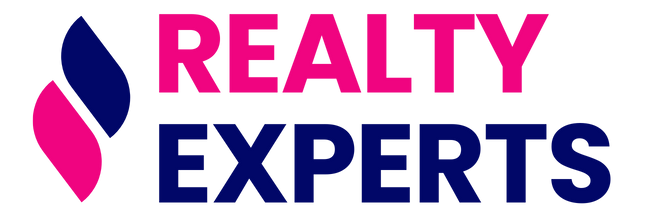Understanding Career Growth and Career Outlook: Pathways to Professional Success

Photo by Etactics Inc on Unsplash
What Is Career Growth?
Career growth refers to the progression an individual makes in their professional life, often measured by advancements in job title, responsibilities, and compensation. Unlike career development, which focuses on acquiring specific skills and knowledge, career growth is about the broader journey-moving from one role to another, whether vertically (promotions), laterally (role changes), or even diagonally (cross-functional moves) [1] . This progression is not limited to climbing the corporate ladder; it includes expanding your scope, taking on new challenges, and finding greater personal fulfillment in your work [4] .
Key Elements of Career Growth
- Promotions and Advancements: The most visible sign of career growth is moving into higher-level positions with increased authority and pay [1] .
- Skill Development: As you grow, you acquire new competencies that make you eligible for more advanced or diverse roles [2] .
- Additional Responsibilities: Taking on more tasks, even without a formal promotion, signals growth and prepares you for future opportunities [4] .
- Cross-Functional Experience: Working in different departments or on varied projects broadens your expertise and network [4] .
- Personal Fulfillment: Growth isn’t just about titles or pay-it’s also about finding meaning and satisfaction in your work [4] .
How Career Growth Differs from Career Development
While the terms are often used interchangeably, they are distinct. Career growth is the overall path you take to achieve your professional ambitions, encompassing promotions, role changes, and expanded responsibilities [1] . Career development , on the other hand, is the process of improving your skills and knowledge, usually through training, education, or on-the-job learning [3] . Development activities-such as attending workshops, earning certifications, or learning new technologies-enable growth by making you a stronger candidate for advancement [2] .
Strategies for Achieving Career Growth
To foster career growth, consider the following actionable steps:
- Set Clear Goals: Define what success looks like for you-whether it’s a specific job title, salary, or type of work.
- Create a Development Plan: Identify the skills and experiences you need to reach your goals and seek out opportunities to acquire them.
- Seek Feedback: Regularly ask for input from supervisors, mentors, and peers to identify areas for improvement and new opportunities.
- Pursue Diverse Experiences: Volunteer for projects outside your usual scope, take on stretch assignments, or explore roles in different departments.
- Network Actively: Build relationships within and outside your organization to learn about new opportunities and gain advocates for your advancement.
- Embrace Lifelong Learning: Stay current with industry trends and continuously update your skills to remain competitive [2] .
What Does Career Outlook Mean?
Career outlook refers to the projected demand, growth, and stability of a particular profession or industry over time. It provides insight into whether jobs in a given field are expected to increase, decrease, or remain steady, and what factors-such as technological advancements, economic trends, or demographic shifts-might influence these changes. Understanding your career outlook helps you make informed decisions about education, skill development, and long-term career planning.

Photo by Peter Conrad on Unsplash
Why Career Outlook Matters
A positive career outlook suggests strong job prospects, opportunities for advancement, and potential for increased earnings. A negative outlook may indicate declining demand, increased competition, or the need to adapt your skills to remain employable. By researching the outlook for your chosen field, you can:
- Identify industries and roles with the highest growth potential
- Make strategic decisions about education and training investments
- Prepare for changes that could impact job security or advancement opportunities
- Align your career goals with market realities
How to Assess Your Career Outlook
To evaluate the outlook for your career, consider the following steps:
- Research Industry Trends: Use resources like the U.S. Bureau of Labor Statistics (BLS) Occupational Outlook Handbook, industry reports, and professional associations to gather data on job growth, salary trends, and emerging opportunities.
- Monitor Technological Changes: Stay informed about how automation, artificial intelligence, and other innovations may affect your field.
- Network with Professionals: Connect with peers, mentors, and industry leaders to gain insights into current challenges and future directions.
- Evaluate Geographic Factors: Consider whether your location offers strong opportunities or if relocation could enhance your prospects.
- Assess Transferable Skills: Identify skills that are in demand across multiple industries to increase your adaptability.
Examples of Career Outlook in Action
For instance, careers in healthcare, technology, and renewable energy often have strong outlooks due to aging populations, digital transformation, and environmental priorities. In contrast, some manufacturing or administrative roles may face declining demand due to automation. By understanding these trends, you can make proactive choices about your education, skill development, and career path.
Integrating Career Growth and Career Outlook
Career growth and career outlook are deeply interconnected. A robust growth strategy requires not only developing your skills and seeking advancement but also aligning your efforts with the realities of your industry’s future. Here’s how to integrate both concepts:
- Align Development with Demand: Focus on building skills that are relevant to high-growth areas within your industry.
- Stay Agile: Be prepared to pivot if your current field’s outlook weakens, leveraging transferable skills to transition into more promising roles.
- Continuous Learning: Commit to lifelong learning to keep pace with industry changes and maintain your competitive edge [2] .
- Proactive Networking: Cultivate a diverse professional network to stay informed about emerging opportunities and trends.
Real-World Strategies for Career Advancement
To put these concepts into practice, consider the following actionable strategies:
For Employees
- Set SMART Goals: Define Specific, Measurable, Achievable, Relevant, and Time-bound objectives for your career growth.
- Seek Mentorship: Find mentors who can provide guidance, feedback, and introductions to new opportunities.
- Pursue Certifications and Training: Invest in courses, workshops, or certifications that align with high-demand skills in your field [3] .
- Document Achievements: Keep a record of your accomplishments, skills gained, and feedback received to support your case for advancement.
- Explore Lateral Moves: Consider roles in different departments or companies to broaden your experience and increase your value.
For Employers and Organizations
- Offer Development Programs: Provide access to training, mentorship, and cross-functional projects to help employees grow.
- Create Clear Pathways: Define career ladders and lattices so employees understand how to advance within the organization.
- Encourage Feedback: Foster a culture of continuous feedback to help employees identify growth opportunities and areas for improvement.
- Support Lifelong Learning: Subsidize education, certifications, or conference attendance to keep your workforce skilled and engaged.
Potential Challenges and Solutions
Pursuing career growth and navigating career outlooks is not without challenges. Common obstacles include limited advancement opportunities, rapid industry changes, and the need to balance work and personal development. Here’s how to address these challenges:
- Limited Advancement Opportunities: If promotions are scarce, focus on lateral moves, skill-building, or consider transitioning to a company or industry with better prospects.
- Industry Disruption: Stay informed about trends and be ready to adapt your skillset to remain relevant.
- Work-Life Balance: Integrate professional development into your routine without sacrificing personal well-being-seek employers who value work-life balance and offer flexible learning options.
Key Takeaways
- Career growth is about advancing in your profession through promotions, expanded responsibilities, and personal fulfillment [1] .
- Career development focuses on acquiring the skills and knowledge needed to support that growth [3] .
- Career outlook refers to the projected demand and stability of your profession, guiding your long-term planning [5] .
- Integrating growth, development, and outlook insights helps you build a resilient, fulfilling career path.
Next Steps
To take control of your career:
- Assess your current skills, goals, and the outlook for your industry.
- Create a personalized development plan targeting high-demand competencies.
- Seek feedback and mentorship to stay on track.
- Regularly review industry trends and adjust your strategy as needed.
For more information on career growth strategies, consider exploring resources from professional associations, industry publications, and career coaching services. Many organizations offer career counseling and development programs-check with your employer or local workforce development office for available options.
References
[1] Indeed. The differences between career growth vs. development. Overview of career growth and development, with actionable steps for advancement.
[2] Everhour. Professional Growth: Key Strategies & Trends for Career Development. Explains professional growth, development, and effective strategies for career advancement.
[3] University of Minnesota. 6 Reasons Professional Development Is Important for Career Growth. Discusses the role of skill development in career growth and employee retention.
[4] Workforce Edge. What Is Career Growth for Employees? Defines career growth and outlines organizational strategies to support it.
[5] Dovetail. What is Career Growth? Definition, Benefits, and Examples. Clarifies the distinction between career growth and development, with real-world examples.
MORE FROM realtyexperts.ai













